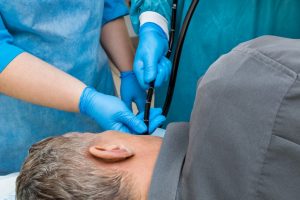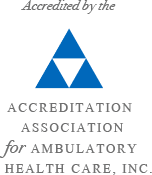When Is An EGD Performed?
 Everyone gets a stomach ache from time to time. Sometimes the answer is as simple as overindulging in food or getting hit by a stomach bug. However, if you have persistent stomach aches accompanied by other troubling symptoms, your gastroenterologist may suggest pinpointing the cause by performing an upper GI endoscopy.
Everyone gets a stomach ache from time to time. Sometimes the answer is as simple as overindulging in food or getting hit by a stomach bug. However, if you have persistent stomach aches accompanied by other troubling symptoms, your gastroenterologist may suggest pinpointing the cause by performing an upper GI endoscopy.
What Is an Upper GI Endoscopy?
Also known as an EGD (esophagogastroduodenoscopy), this test uses an endoscope to take pictures of the esophagus, stomach, and duodenum (the top portion of the small intestine) to diagnose problems in the upper gastrointestinal (GI) tract.
The endoscope is a long, thin, flexible tube with a light and camera attached to the end. While you’re under sedation, your doctor inserts the tube into the GI tract through your mouth. The scope is then gently pushed along the GI tract, allowing it to take video images that are projected onto a computer in the exam room for the doctor to evaluate.
What Signs and Symptoms Lead to an EGD?
Your is gastroenterologist is likely to perform the procedure if you suffer from the following symptoms:
- Difficulty swallowing
- Upper abdominal or chest pain not related to heart issues
- Unplanned weight loss
- Persistent vomiting
- Blood in the GI tract
- Persistent heartburn
What conditions is an EGD used to diagnose?
The EGD is helpful in diagnosing the following conditions:
- GERD – (gastroesophageal reflux disease)
- Blocked or narrowed tissue
- Ulcers and their accompanying redness and swelling
- Benign or malignant tumors
- Increased vein size in esophageal tissue
- Hiatal hernia, which is when the stomach moves up into the esophagus
- Tissue damage from ingesting dangerous chemicals like detergents or other cleaning agents
- Celiac disease, an autoimmune disease where the body reacts to food containing gluten
- Crohn’s disease, a chronic inflammatory condition of the intestines
- Infections in the upper GI tract
An EGD is not only used to diagnose problems in the upper GI tract. The gastroenterologist can attach specialized tools to the scope to correct a number of different problems, including:
- Controlling upper GI bleeding
- Removing polyps and tumors
- Opening constricted pathways
- Removing foreign objects
- Performing laser therapy
- Inserting necessary medical devices for tube feeding
- Banding oversized or otherwise abnormal veins in the esophagus
- Collecting tissue samples for further testing
What Are the Advantages of Opting for an EGD?
Choosing this test to diagnose your upper GI problems offers many benefits. The procedure offers:
- A quick, painless experience
- A fast diagnosis that allows you to begin immediate treatment
- The opportunity for your gastroenterologist to perform corrective procedures during the EGD
- A more comprehensive diagnostic tool compared to an x-ray
- A video recording of the procedure that allows for a thorough comparison with follow-up tests
If you’re experiencing any of the symptoms associated with upper GI distress and think an EGD might be right for you, make an appointment today with one of the expert physicians of the Gramercy Park Digestive Disease Center. Our team specializes in the diagnosis and treatment of all digestive disorders using a variety of endoscopic procedures in our state-of-the-art facility.


